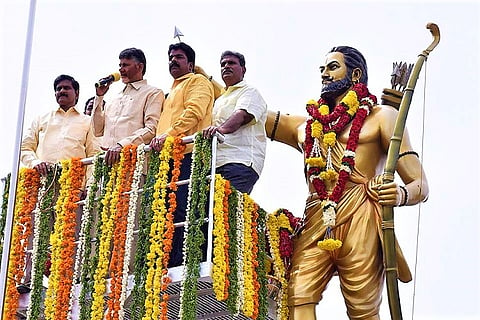

The statue of revolutionary freedom fighter Alluri Sitarama Raju will soon find its place in Parliament, as the Central government has given its nod.
Speaking to reporters, Kakinada MP T Narasimham said that he had received communication from New Delhi to this effect, after he wrote a letter in 2015 to Lok Sabha Speaker Sumitra Mahajan, following which the matter was referred to a joint committee.
The committee approved the statue and communicated the same to Narasimham.
In July this year, Chief Minister N Chandrababu Naidu said that the Telugu Desam Party (TDP) would ask the Centre to install a statue of freedom fighter Alluri Sitarama Raju at the premises of the Parliament House in New Delhi.
In January, then Union Minister of Railways and Rajya Sabha member from Andhra Pradesh, Suresh Prabhu, adopted Pandrangi village in Padmanabham mandal of Visakhapatnam district, which was the native place of Alluri Sitarama Raju.
Alluri Sitarama Raju was born on July 4, 1898, and is widely credited for leading the 'Rampa revolt' against British colonisation, mobilising tribals in East Godavari and Visakhapatnam districts in the early 20th century.
He also fought against colonial laws implemented by the British, like the Madras Forest Act, 1882, which greatly affected tribal people in the region.
While leading the 'Rampa revolt' between 1922 and 1924, he and his followers attacked several police stations, and stole ammunition and guns. He is also said to have killed several British officers serving in the state.
As he enjoyed the complete support of locals, the British had a tough time tracking his whereabouts, during the attacks.
Alluri even went underground for a short period of time, before he resurfaced, and was finally gunned down on May 7, 1924 by the British.
He was since dubbed 'Manyam Veerudu' or 'Hero of the jungles'.